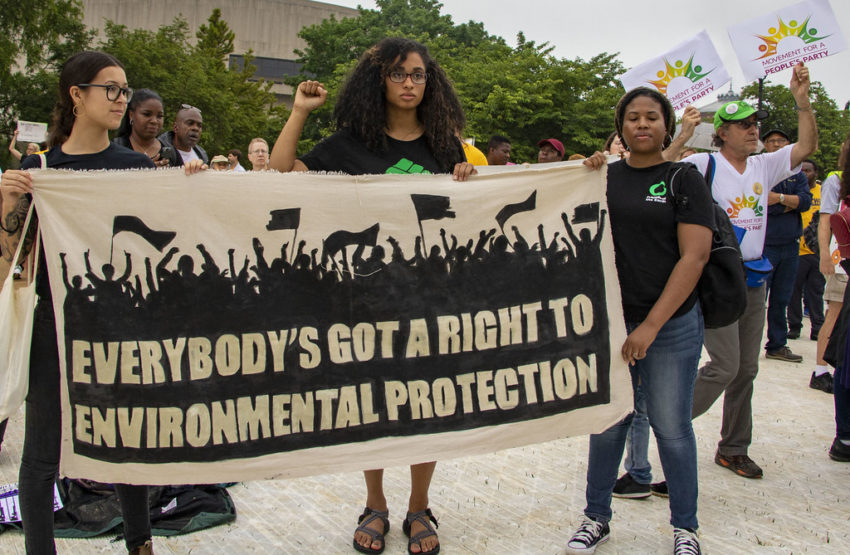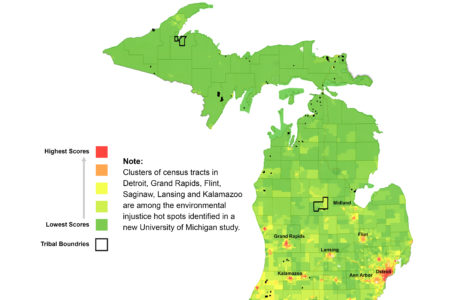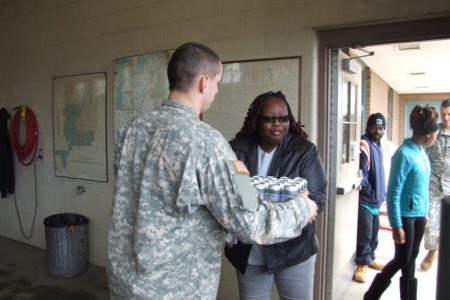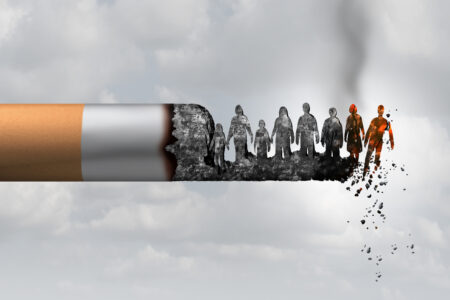
Share On Social!
Climate change is not and will not impact all people equally — Latinos and other minority groups shoulder the most significant threats.
Worse, cities in the U.S. are illustrating that fact today, according to a recent study from the University of Michigan. Their research shows that climate change subjects minority communities to high risks of chemical and environmental exposures.
“A key finding of this report is that environmental injustice exists across Michigan, with residents of low-income and minority communities disproportionately burdened by environmental contamination and health risks—just as we saw in Flint,” Paul Mohai, a professor at the University of Michigan School for Environment and Sustainability, told Michigan News.
Latinos, who already experience harm at the hands of climate change, will continue to face damaging consequences if civic and local leaders do nothing.
How Did Researchers Come to These Conclusions?
Researchers used 11 environmental and six demographic indicators to study the impacts of environmental injustice — the unequal climate change has on minority and low-income groups in Michigan (5.2% Latino).
The environmental factors include:
- Air toxics cancer risk
- Air toxics respiratory hazard index
- Diesel particulate matter level in air
- Ozone level in air
- 5 level in air

- Traffic proximity and volume
- Lead paint indicator
- Proximity to National Priority List sites financed under the federal Superfund program
- Proximity to risk management plan facilities
- Proximity to treatment storage and disposal facilities
- Wastewater dischargers indicators
The demographic indicators include the percentage of:
- Minority residents
- Those living below two times the federal poverty level
- Unemployed
- Those with less than high school education
- Those in linguistic isolation
- Housing-burdened low-income households
“Based on interview data, environmental justice leaders perceived a statewide inequity of both access to environmental goods and protection from environmental harms that is based on both income and race,” the study states.
“An interview participant explicitly addressed the state of environmental justice in Michigan when they said, ‘The state of environmental justice in those communities in Michigan at least
is non-existent. If the question is how much environmental justice policy do they have access to in order to advance environmental justice and overcome environmental injustice, the answer is almost none.’”
What Are Their Findings?
Using these data sets, researchers classified communities in Michigan with environmental justice scores or the areas that face higher risks of environmental, chemical exposure.
The research illustrates that communities with the most significant scores, or hot spots, correlated with having high populations of minority groups.
“Results from our mixed-method analysis reveal the need for stronger state-level environmental policy—supported by a screening tool—to protect vulnerable communities from the disproportionate impacts of pollution,” said Laura Grier, a study co-author and University of Michigan graduate student.

In Michigan, these towns and cities include:
- Detroit (7.6% Latino)
- Grand Rapids (15.3%)
- Flint (3.9%)
- Saginaw (14.9%)
- Lansing (12.2%)
- Kalamazoo (7.1%)
These kinds of exposures can lead to numerous health problems, such as brain damage in children, reproductive problems, and Toxicant-Induced Loss of Tolerance (TILT).
While this is an issue that is impacting Latinos and other minority groups today, the researchers said there are steps—such as using their tools to better inform legislation—Michigan, and all communities in America can take to make progress in this issue.
“Our analysis makes the case for future policy decisions to be informed by the perspectives of affected community members, especially the voices of minority, indigenous and low-income residents who have historically been excluded from decision-making processes,” Grier said.
Editor’s Note: This article is part of a collaboration between Salud America! and the Hoffman Toxicant-Induced Loss of Tolerance (TILT) program at UT Health- San Antonio. To find out if you are TILTed due to exposure to everyday foods, chemicals, or drugs, take a self-assessment or learn more about TILT.
By The Numbers
24
percent
of Mexican American-nonsmokers are exposed to secondhand smoke



